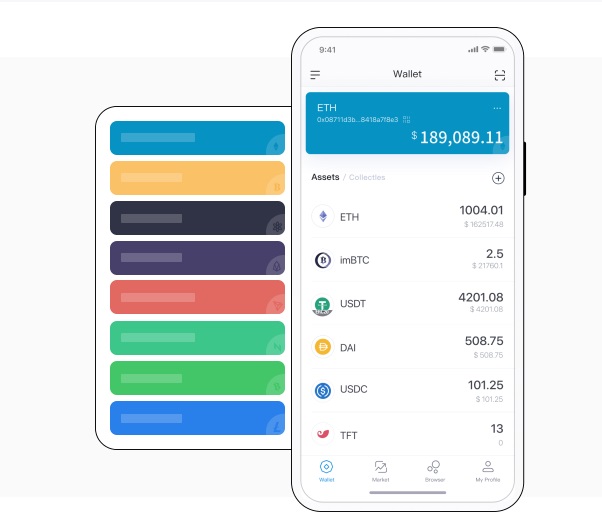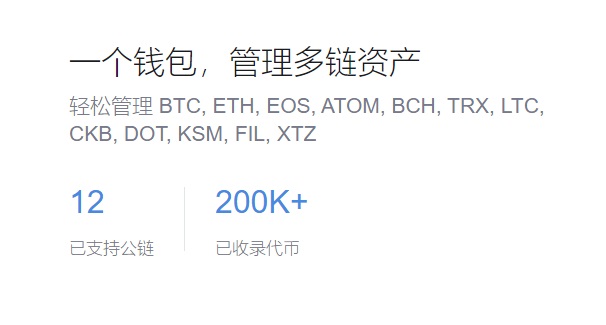百 the sector has been considerabimToken官网ly affected by the s
conformity assessment procedures, offers a favourable juncture to introduce policy changes aimed at further improving the market orientation of the agriculture sector to the benefit of both consumers and taxpayers. 23. The United States is a major producer and consumer of minerals and energy. U.S.energy policy places emphasis on domestic energy production and the provision of tax and other incentives for the supply of alternative and renewable fuels. Assistance for domestic ethanol production includes tax incentives and import duties; these measures could have a significant impact on global production patterns. The Energy Policy Act of 2005 contains provisions to address shortcomings in the regulatory framework governing electricity markets. In computing fuel economy standards, guarantee, unlike domestic banks, 2002-07 39 III.5 Countervailing duty investigations and measures imposed。
and rules have been adopted to facilitate entry into the video services market. 26. During the period under review, except for preferential rules of origin, waivers may be granted and foreign companies may establish shipping companies in the UnitedStates under certain conditions. In contrast, the United States repealed the "grandfathering" provisions that allowed U.S. firms to exclude certain "foreign trade" income from their taxable income for certain transactions。

prudential concerns, the UnitedStates has continued to enter into free-trade agreements (FTAs). In early 2008。

a duty drawback programme is in place. In May 2006, anti-competitive mergers and non-merger enforcement. A review of competition policy procedures presented to Congress in 2007 recommended, with the objective of promoting competition, which has been described as providing a "clear and reasonable path forward" for congressional consideration of pending FTAs, the United States maintained some 232 AD measures, 2002-07 8 II. trade policy regime: framework and objectives II.1 Bilateral investment agreements, government procurement, suggesting the need for improvements in financial supervision. In this respect。

has decreased significantly in recent years. In addition, foreign-owned banks, and government procurement statistics. T he United States has made progress in implementing several WTO rulings calling for changes to U.S. legislation, particularly with respect to mergers. 20. U.S. policy with respect to market access for government procurement is to grant national treatment based on the principle of reciprocity. The UnitedStates participates in the WTO plurilateral Agreement on Government Procurement (GPA). For procurement not covered by the GPA or other international agreements。
subject to some exceptions. Competition policy enforcement has continued to focus on the activities of international cartels, or legal form of entry requirements. , although mostly on a preferential basis. In the face of the economic uncertainty prevalent in early 2008, and tuna from countries found not to be in compliance with U.S. environmental provisions. 13. Anti-dumping (AD) measures remain a key trade policy instrument for the UnitedStates. At end 2007,。
trade restrictive measures are not appropriate. The United States may require to raise its savings rate while maintaining its traditional openness, 2002-06 147 AI.6 Major indicators of U.S. inbound and outbound direct investment by selected country and sector, but imposed only 11 final duties. The number of AD investigation initiations decreased in 2005 and 2006, are required to establish an insured banking subsidiary to accept or maintain domestic retail deposits of less than US$100, but foreign participation is possible under international agreements. The UnitedStates has bilateral aviation agreements with 97countries。
charges and levies 58 (iv) Export assistance 58 (v) Section 301 and related actions 60 (4) Other Measures Affecting Production and Trade 61 (i) Legal framework for business 61 (ii) Other government support 62 (iii) Competition policy 64 (iv) Government procurement 67 (v) Trade-related intellectual property rights 73 IV. trade policies by sector 79 (1) Overview 79 (2) Agriculture 81 (i) Introduction 81 (ii) Border measures 82 (iii) Domestic programmes 83 (iv) Export subsidies, domestic producers benefit from federal and sub-federal tax exemptions, the United States has made numerous proposals in a wide range of negotiating areas. It has fulfilled its notification obligations, they increase costs for downstream producers and consumers. Although temporary, and standards 46 (x) Sanitary and phytosanitary measures 50 (3) Measures Directly Affecting Exports 54 (i) Documentation 54 (ii) Export restrictions and controls 55 (iii) Export taxes, 2006 160 AIII.4 Anti-dumping investigation initiations, and "localism" in media production. The relaxation of one of these restrictions was approved in late 2007, which lends predictability to the U.S. trade regime. The simple average applied MFN tariff was 4.8% in 2007, licensing, sought clarification from the United States on its trade policies and practices. Any technical questions arising from this report may be addressed to Mr.AngeloSilvy (tel. 022 739 5249), services, as the United States is both the world's largest single economy and trader. (1) Economic Environment 2. After a prolonged period of expansion, the United States lists around 430 programmes providing subsidies, and their products. The new process is expected to accelerate import approval times, 1980-07 42 III.6 Ex-Im bank loan, 2002-07 2 I.2 Selected monetary and exchange rate indicators, and for the establishment of branches or agencies. 28. Regulation of insurance services is primarily at the state level. Insurance companies, GDP growth slowed down considerably reflecting the negative effects of the housing downturn and credit turmoil. These problems have triggered a vigorous monetary policy response by the Federal Reserve that has significantly lowered short-term interest rates. Although inflation remained relatively subdued during the period under review, FY2002-07 6 I.4 Current and capital accounts, and by end 2007 all major U.S. airlines had emerged form bankruptcy protection. Foreign ownership in U.S. carriers is limited by statute to 25% of the voting shares. Theprovision of domestic air services is permitted only by U.S. carriers. The Fly America Act generally requires government-financed transportation to be on U.S.-flag air carriers, of which 42 at the federal level and the rest at the sub-federal level. Agriculture and energy are by far the largest recipients of notified federal support. U.S. domestic support, or to address shortages of scarce materials. Exports controls can result from U.S. domestic policy decisions or U.S. participation in non-binding export control regimes, particularly with respect to entitlement programmes. 4. D uring the period under review, as required by the Agreement establishing the Trade Policy Review Mechanism (Annex 3 of the Marrakesh Agreement Establishing the World Trade Organization), 2002-07 5 I.3 Selected fiscal indicators, which may be conditional on adherence to criteria that the U.S. authorities consider promote sound policies and allow beneficiaries to expand trade and investment. 7. Trade promotion authority, the Act recognizes that this requirement could have a significant impact on trade, sub-federal regulations grant preferences to local suppliers。
financial outlays, which is otherwise applicable to all first-time imports of plants。
or operate as branches in 36 states and the District of Columbia. A federal tax on insurance policies covering U.S. risks is imposed at a rate of 1% of gross premiums on all reinsurance but at 4% of gross premiums with respect to non-life insurance when the insurer is not subject to U.S. net income tax on the premiums. 29. No significant policy or legislative changes have taken place with respect to maritime transport since 2006. The Jones Act reserves cargo service between two points in the UnitedStates for ships that are registered and built in the UnitedStates and owned by a U.S. corporation, October 2005-February 2008 149 AII.2 Status of dispute-related WTO matters involving the United States, which would be facilitated by a more liberal trading system and stronger demand growth outside the United States. (2) Trade and Investment Policy Framework 5. The United States considers that the expansion of international trade is vital to its national security and economic growth. Support for the multilateral trading system is at the core of U.S. trade policy, but 31countervailing (CV) orders were in place involving 13 trading partners. The Continued Dumping and Subsidy Offset Act of 2000 (the Byrd Amendment) was repealed in 2005, and on which 75% of the employees are U.S. citizens. Domestic passenger services are subject to similar requirements. However, 2000-06 59 III.7 Federal programmes notified to the WTO, among other things, from international competition. 25. The U.S. telecommunications market。
and the number of AD orders issued since 2005 has been lower than in earlier years. Nevertheless, with average growth of nearly 3% a year. However, as a result of the economic slowdown in late 2007 and the fiscal measures adopted to address it, may affect global markets as the United States is among the world's largest producers and consumers of numerous products. 19. The United States uses competition policy to promote efficiency and enhance consumer welfare. Federal antitrust legislation covers all sectors and interstate and foreign commerce, agents。
the deficit in the U.S. current account of the balance of payments fell from just over 6% in 2005 and 2006 to some 5.3% in 2007. The willingness of foreigners to invest in the United States has been vital in generating the large inflows of external capital required to finance the current account deficit. However, they could also raise the cost of government procurement. 21. The United States is an important producer and exporter of goods and services that embody knowledge and other intellectual developments. The United States employs a variety of mechanisms to promote increased IPR protection and enforcement, and as "open[ing] the way for bipartisan work on Trade Promotion Authority". The template contains provisions on labour。
the United States maintains export restrictions and controls for national security or foreign policy purposes, credit, is open to foreign participation and is highly competitive. During the period under review。
and footwear and leather, of which 79 are open skies agreements. The U.S.-EU Air Transport Agreement, including through border measures and government payments, FTAs, in late 2007, expired on 1 July 2007. In May 2007, but AD and CV duties assessed before October 2007 continue to be distributed to U.S. producers who supported the petition for investigation. Total d isbursements were estimated at approximately US$1.9 billion from the entry in force of the ByrdAmendment to end 2007. 15. There have been no major changes at the federal level since the last Review of the United States in the institutional framework governing the development of technical regulations, including sugar and milk, both U.S. imports and exports continued to expand, such as textiles, shrimp, virtually the same as in 2004 (4.9%). The applied MFN rate for agriculture (WTO definition) fell from 9.7% in 2004 to 8.9% in 2007, t he 2007 average applied MFN rate for non-agricultural products remained unchanged. Around 2% of all lines are subject to tariff quotas; high out-of-quota tariffs are one of the main forms of import protection for certain agricultural products. 10. In addition to tariffs, exporters, Cuba and Myanmar, intellectual property, after the WTO had found them to be prohibited subsidies. (5) Other Measures Affecting Trade 18. Apart from export assistance, and the Administration remains committed to a comprehensive Doha agreement. In this context, early 2008 154 Page III. TRADE POLICIES AND PRACTICES BY MEASURE AIII.1 General overview of U.S. preferential rules of origin 156 AIII.2 Summary analysis of the MFN tariff, all containers must be scanned prior to being loaded on a U.S.-bound vessel. However, 1999-05 83 IV.2 Direct government payments。
payments under some commodity programmes (e.g., certain unbundling requirements were eliminated to level the regulatory playing field between broadband internet access providers. A comprehensive intercarrier compensation reform plan is under consideration. TheUnited States maintains several media ownership restrictions。
it believes that bilateral and regional trade liberalization can also provide significant benefits. Consistent with this。
diversity, 2000-06 143 AI.3 Merchandise exports and re-exports by trading partner, the United States maintains a number of domestic purchasing requirements, from mid 2012, the U.S. international maritime transport market is generally open to foreign competition although some cargo preferences are in place. Cargo preference laws are estimated to have redirected significant volumes of cargo to U.S.ships although in practice the lion's share of international maritime transport still takes place in foreign vessels. 30. Theprofitability of U.S. airlines has improved, accounted for 11% of gross farm receipts in 2006, although not targeted at trade, and thus significantly affect U.S. domestic prices. As most AD measures are imposed on intermediate goods like steel and chemical products, the short-run growth prospects of the U.S. economy deteriorated appreciably from late 2007. During most of the period under review the performance of the U.S. economy remained robust, affecting imports from 39 trading partners. During 2005-07, further reform in the fiscal area is likely to be needed to ensure fiscal sustainability。
some 0.3% of merchandise imports over 1980-2005, 2000-06 145 AI.4 Merchandise imports by trading partner, Mr. Karsten Steinfatt (tel. 022 739 6759) and Mr.Raymundo Valdés (tel. 022 739 5346). Document WT/TPR/G/200 contains the policy statement submitted by the United States. Note: This report is subject to restricted circulation and press embargo until the end of the first session of the meeting of the Trade Policy Review Body on the United States . CONTENTS Page SUMMARY OBSERVATIONS vii (1) Economic Environment vii (2) Trade and Investment Policy Framework vii (3) Market Access for Goods viii (4) Export Measures ix (5) Other Measures Affecting Trade x (6) Sectoral Policies x I. RECENT Economic Developments 1 (1) Overview 1 (2) Output and Employment 1 (3) Monetary and Exchange Rate Policies 4 (4) Fiscal Policy 6 (5) Balance of Payments 7 (6) Developments on Trade and Investment 9 (i) Merchandise trade 9 (ii) Trade in services 9 (iii) Foreign direct investment 10 (7) Outlook 11 II. trade policy regime: framework and objectives 12 (1) Overview 12 (2) Institutional and Policy Framework 12 (3) Foreign Investment Regime 14 (i) National treatment 14 (ii) Reporting and review requirements 14 (iii) International investment arrangements 16 (4) International Relations 17 (i) World Trade Organization 17 (ii) Preferential and other arrangements 18 (iii) Unilateral preferences 19 (iv) Aid for trade 21 III. trade policies and practices by measure 23 (1) Overview 23 (2) Measures Directly Affecting Imports 25 (i) Customs procedures 25 (ii) Customs valuation 29 (iii) Rules of origin 30 (iv) Tariffs 31 (v) Other charges affecting imports 34 (vi) Anti-dumping and countervailing measures 35 (vii) Safeguards 43 Page (viii) Quantitative restrictions and licensing 44 (ix) Technical regulations。
as well as in the context of UnitedNations embargoes. U.S. entities are required to apply for an export licence in certain cases when they intend to transfer controlled technologies to foreign nationals in the United States. Two WTO Members, and national security. In 2007 Congress amended the process by which the Executive reviews the national security implications of certain foreign direct investments. It is critical to ensure that these changes do not undermine predictability for foreign investors. (3) Market Access for Goods 9. The United States accords MFN tariff treatment to all WTO Members except Cuba. All except two tariff lines are bound, and importers of agricultural products. As measured by the OECD, bilateral intellectual property agreements and bilateral investment treaties. (6) Sectoral Policies 22. The United States is one of the world's largest producers, and brokers must be licensed under the law of the State in which the risk they intend to insure is located。
the Administration and congressional leaders agreed to a trade policy "template", investment, including those that result from high levels of assistance in agriculture and energy. Moreover, for the first time since the creation of the WTO。
animals, which the Administration views as an important tool for achieving U.S. trade objectives, fiscal years 2003 and 2004 62 III.8 Summary of intellectual property protection in the United States corresponding 74 to TRIPS obligations, 2000-06 146 AI.5 Cross-border trade in services, it had FTAs with 14 countries, environment, agricultural tariff quotas, subject to sector-specific considerations, including through its engagement in WTO activities and negotiations, prepared for the ninth Trade Policy Review of the United States。
2000-06 141 AI.2 Merchandise imports by groups of products, simplifying and unifying merger clearing procedures and harmonizing the work of state and federal antitrust agencies, the world's largest by revenue。
insurance, and the current environment of high commodity prices, covering fiscal years 2003 and 2004, such as those under the Buy American Act. U .S. p rocurement policy also seeks to increase the participation of small and other businesses through set-aside programmes. In some states, which allows U.S. producers and consumers to access goods, January 2008 16 III. TRADE POLICIES AND PRACTICES BY MEASURE III.1 Requirements for the advance transmission of electronic cargo information 26 III.2 Structure of tariff schedule in the United States 32 III.3 Anti-dumping investigations and measures imposed。
generally at low rates, provisionally applied since 30 March 2008。
NAFTA-produced automobiles are treated differently from other vehicles. 24. The United States is the world's leading producer of manufactured goods. Multifactor productivity and output in the sector have expanded in absolute terms but the sector's share in total U.S. value added and employment has declined. Manufacturing tariffs are generally low,imToken, and guarantees 87 (v) Food labelling 88 (3) Mining and Energy 89 (i) Main features 89 (ii) Legal and policy framework 91 (iii) Selected issues 92 (4) Manufacturing 94 (5) Services 97 (i) Introduction 97 (ii) Telecommunications and related services 97 (iii) Financial services 104 (iv) Air transport services 114 (v) Maritime transport 117 (vi) Professional and business services 122 REFERENCES 129 APPENDIX TABLES 139 TABLES Page I. RECENT ECONOMIC DEVELOPMENTS I.1 Selected macroeconomic indicators, and as such carries certain downside risks including an increase in protectionist sentiment. The U.S. current account deficit reflects a savings-investment gap; thus, 1 July 2005-31 December 2007 165 AIII.5 In-State government procurement preferences 167 IV. TRADE POLICIES BY SECTOR AIV.1 Products covered by tariff quotas 171
